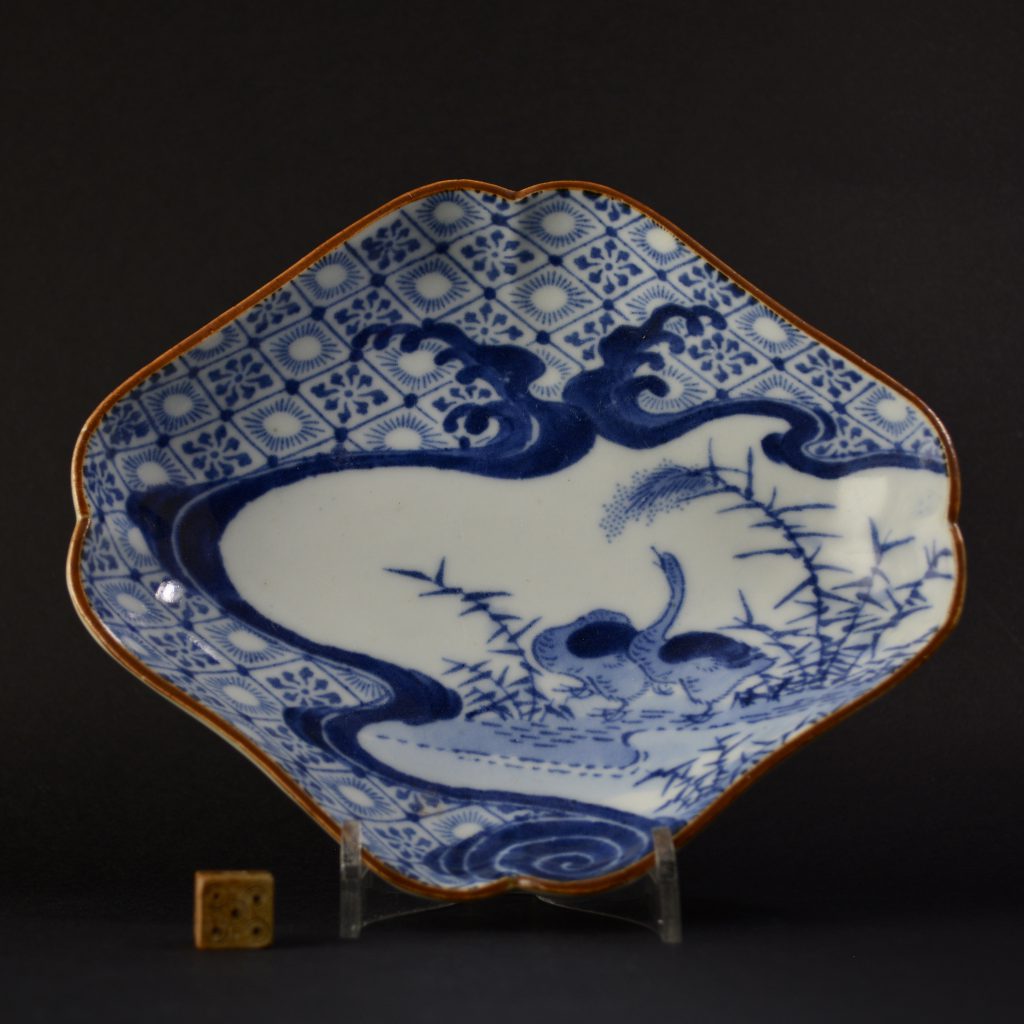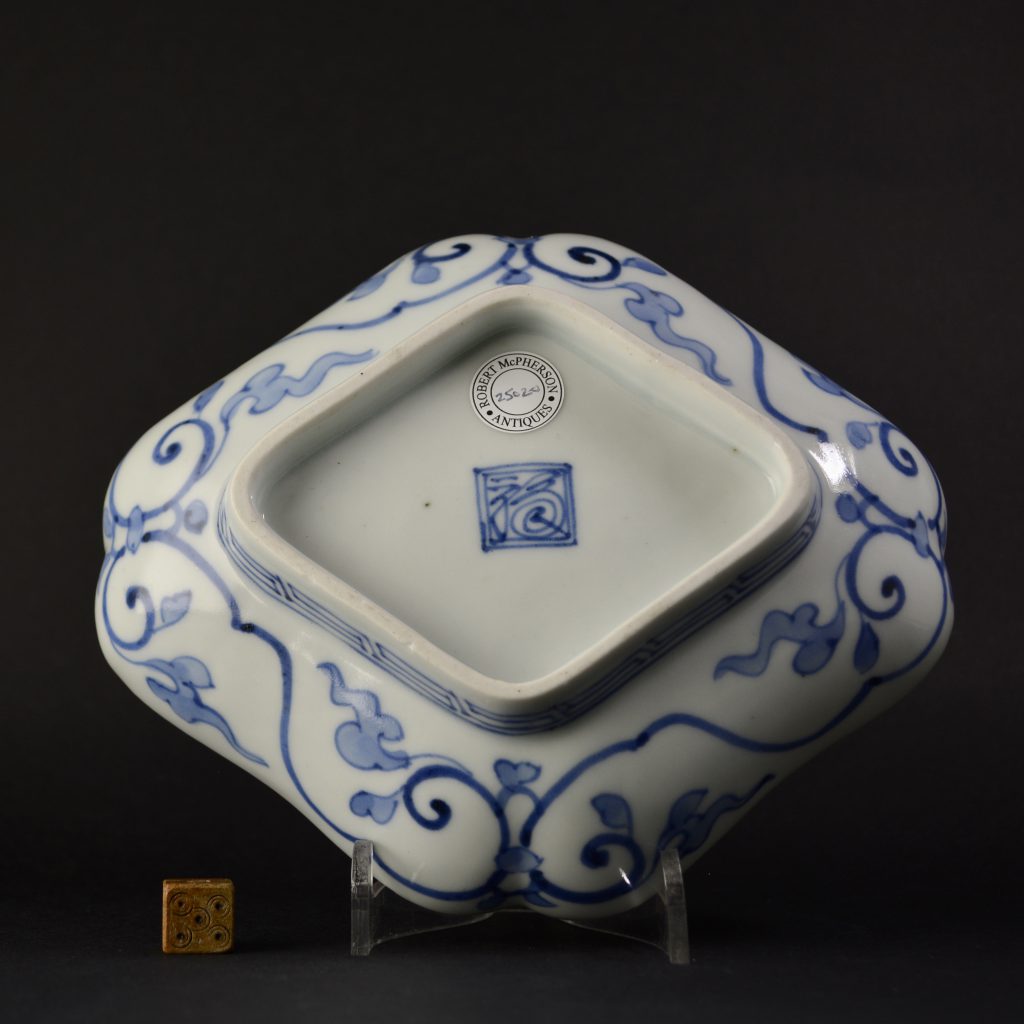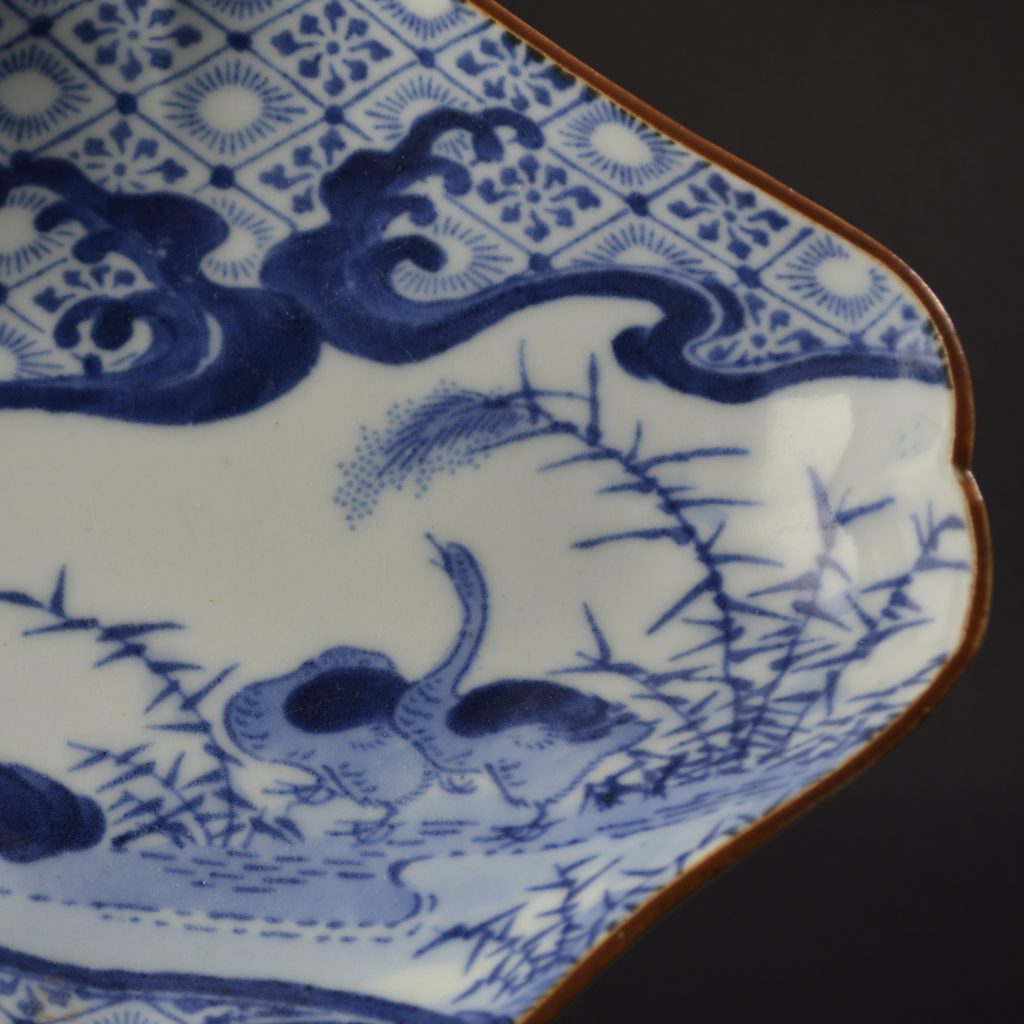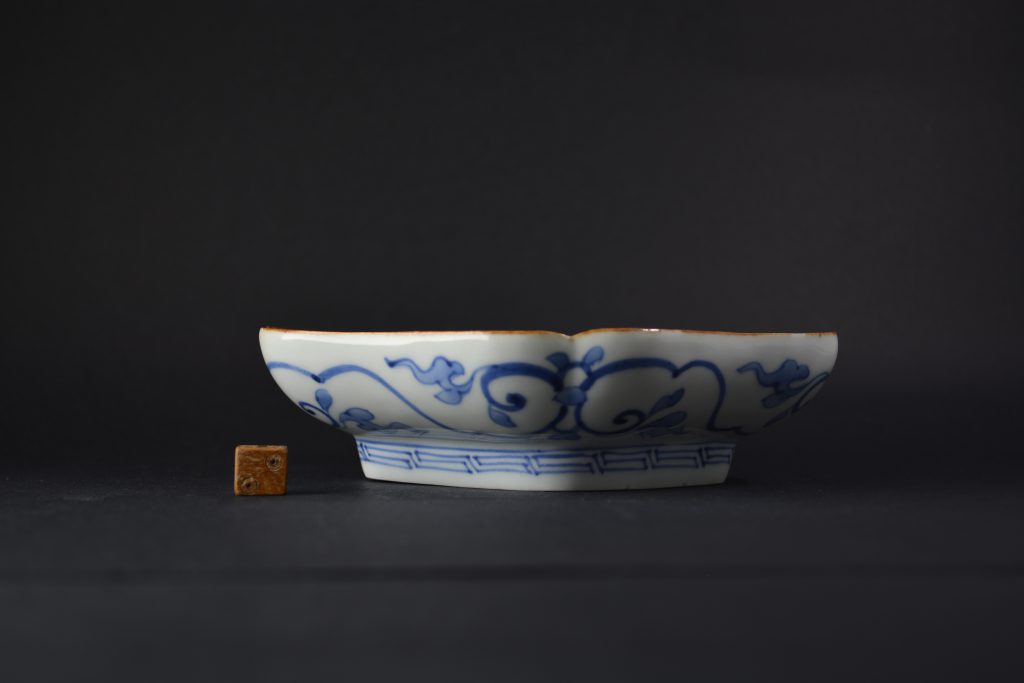
A Stencilled and Painted Japanese Porcelain Dish c.1690 – 1730
A Rare Japanese Porcelain rhomboid form dish, possibly Kama No Tsuji kilns, c.1690 – 1730. Decorated in blue and white using the Katagami Zuri stencilled technique and hand-painting. The design consists of a fabric inspired diaper pattern with an asymmetrical stylised frame of swirling, crashing waves. This framed panel shows two geese amount grasses. The reverse with painted Karakusa scrolling foliage, the base with a running Fuku Mark (Luck). The cut rim with a Fuchibeni iron-oxide dressing.
SOLD
- Condition
- In perfect condition.
- Size
- Length : 15.1 cm (6 inches) Width : 13.3 cm (5 1/4 inches)
- Provenance
- N/A
- Stock number
- 25020
Information
Stencilled Designs on Japanese Porcelain :
This technique adapted from textile production was employed contemporaneously at the Nabeshima kiln, and although apparently a mass production technique, it has been suggested that it was actually reserved for use on more expensive porcelains, because of the cost of the actual stencils; the object being to produce patterns of a standard or identical appearance. This class of porcelain was produced at the Kama no Tsuji kiln in the Nangawara valley for a comparatively short period between the years 1690 to 1730 and was made primarily for the domestic market. It has been suggested that the production of this style of porcelain stopped because the skilled workers were subsequently employed at the Nabeshima kiln.





